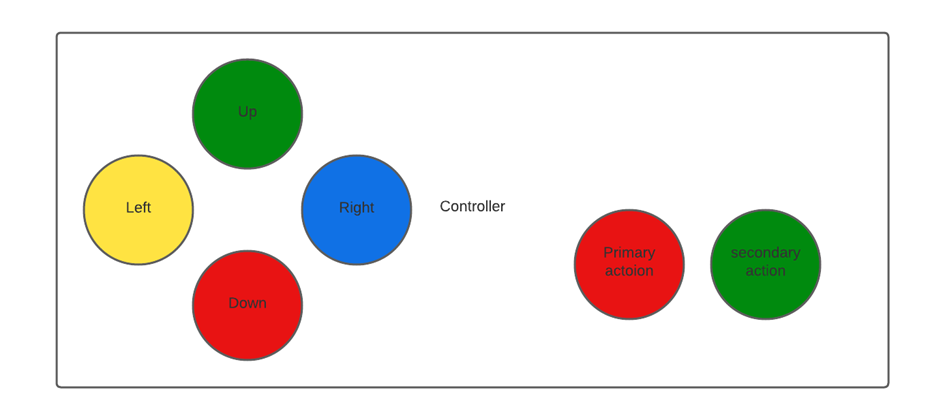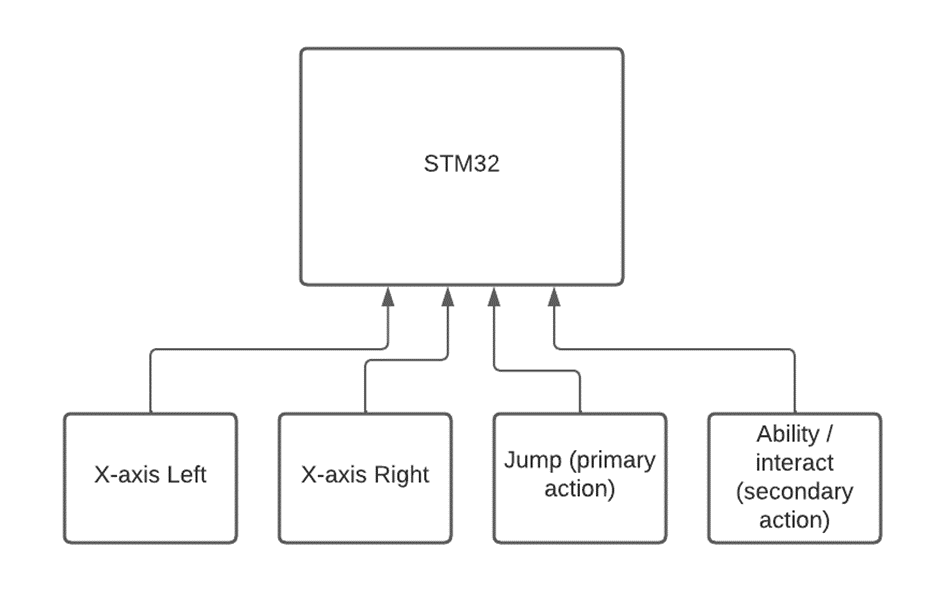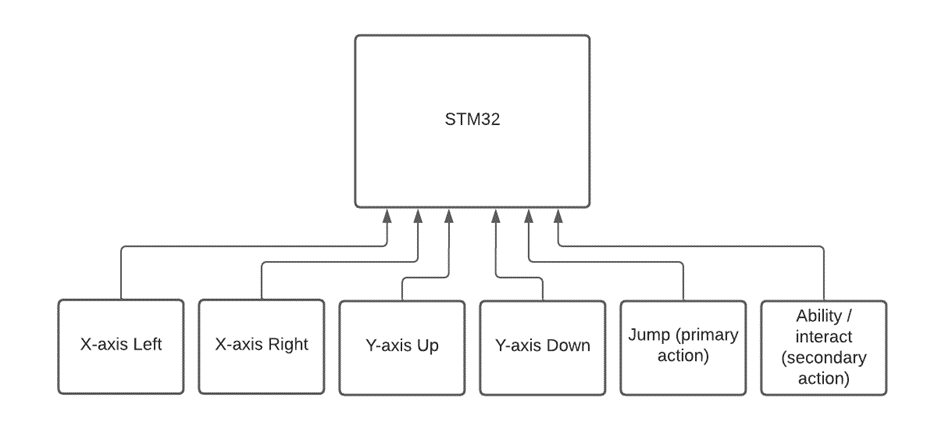diff options
| author | heavydemon21 <48092678+heavydemon21@users.noreply.github.com> | 2023-02-15 21:24:09 +0100 |
|---|---|---|
| committer | GitHub <noreply@github.com> | 2023-02-15 21:24:09 +0100 |
| commit | 2b1d429e76bb664fde8ca7fa0a32b72dd8961de7 (patch) | |
| tree | 9dc00b0cd3196ca5b397d3ff8bff307c723b6eab | |
| parent | 0d601478e7809958a9f30d83a38428d401aa538a (diff) | |
| parent | 0730ad350a3a58de3a60ebe00e141a66875c5c33 (diff) | |
Merge branch 'lonkaars:master' into master
| -rw-r--r-- | docs/architecture.md | 28 | ||||
| -rw-r--r-- | docs/research.md | 28 |
2 files changed, 29 insertions, 27 deletions
diff --git a/docs/architecture.md b/docs/architecture.md index 635d8f8..bce2f12 100644 --- a/docs/architecture.md +++ b/docs/architecture.md @@ -14,17 +14,17 @@ Important notes: The playable character has 4 actions that it can perform: -- horizontal movement +- horizontal movement - aiming -- jump -- ability / use +- jump +- ability / use To perform these action there will be 6 buttons for the user to use. A joystick is not needed for the movement because the movement is not complex, so button fulfill this. The layout will be as follows: - + ## Input handling: @@ -32,15 +32,15 @@ The hardware consist out of a microcontroller and a FPGA. The microcontroller will process the game logic. For this reason the input will be handled by the microcontroller as this will improve playability (stated in research). -The controller will have four buttons, so 4 data pins are needed on the microcontroller plus a ground and 3.3V or 5V pin. -In total there are 6 pins needed. -If the game is going to be played by 2 person, there are 4 more data pins needed so 8 data pins for both controllers. +The controller will have six buttons, so six data pins are needed on the microcontroller plus a ground and 3.3V or 5V pin. +In total there are eight pins needed. +If the game is going to be played by 2 persons, there are six more data pins needed so 8 data pins for both controllers. For data transfer between STM32 and FPGA there are 4 pins needed at maximum (SPI for instance). The STM32 will be used and most STM32 boards have enough I/O pins for our needs. The STM32 F030 and F091 provided by Avans both have 15 digital pins and 6 analog pins. The buttons will be connected as follows: - + To implement the input in the game, the input should be checked at the start of each game cycle. In this case there are no interrupts needed. @@ -51,11 +51,12 @@ The game engine will be designed to support 2D games. The engine will use a stat FSM is a useful tool for managing game states and transitions. A game can have many different states, such as a title screen, a level selection screen, a loading screen, and various gameplay states. Each state represents a particular configuration of the game, with different sets of variables, objects, and logic The state machine will be designed with the following states: -1. Initialization: The initialization state will be responsible for initializing all game-related variables and subsystems, including the FPGA-based picture processing unit. -2. Title Screen: The title screen state will display the game's title screen and wait for user input to start the game or access the options menu. -3. Options: The options state will allow the user to configure game settings, such as sound and graphics options. -4. Game Play: The game play state will be responsible for running the game logic and updating the game state. -5. Game Over: The game over state will display the game over screen and wait for user input to restart the game or return to the title screen. + +1. Initialization: The initialization state will be responsible for initializing all game-related variables and subsystems, including the FPGA-based picture processing unit. +2. Title Screen: The title screen state will display the game's title screen and wait for user input to start the game or access the options menu. +3. Options: The options state will allow the user to configure game settings, such as sound and graphics options. +4. Game Play: The game play state will be responsible for running the game logic and updating the game state. +5. Game Over: The game over state will display the game over screen and wait for user input to restart the game or return to the title screen. # PPU @@ -275,6 +276,7 @@ The Audio Processing Unit (APU) is programmed on the FPGA, here it will produce These signals will be generated using PWM, this allows a digital signal to act as an analog signal. Using this method it is theoretically possible to create all of the aforementioned signals.  + This figure shows an example signal (in blue), created by the FPGA. and the corresponding analog signal (in red). # level design diff --git a/docs/research.md b/docs/research.md index ecabfe6..a7a6dcb 100644 --- a/docs/research.md +++ b/docs/research.md @@ -234,21 +234,21 @@ There are a lot of ways of creating tiles and sprites for pixel art. Underneath The playable character has 4 actions that it can perform: -- horizontal movement +- horizontal movement - aiming -- jump -- ability / use +- jump +- ability / use To control these actions there has to be at least 4 inputs. These can either be a button or joystick. The actions can be done as follows: -| Action | Button | Joystick | -| ------ | ------ | -------- | -| Movement | x | x | -| Aiming | x | x | -| Jump | x | | -| Ability | x | | +| Action | Button | Joystick | +| -------- | ------ | -------- | +| Movement | x | x | +| Aiming | x | x | +| Jump | x | | +| Ability | x | | ## Handling @@ -271,12 +271,12 @@ This will decrease the delay between the user-input and onscreen gameplay. The hardware of the game consist out of a microcontroller(stm32) and a FPGA(basys3). The hardware components needs to communicate with each other. For this a protocol is needed. See table 1 for a comparison of possible protocols: -| Protocol | UART | I2C | SPI | +| Protocol | UART | I2C | SPI | | -------- | ----- | ---- | --- | -|Number of lines | 1/2 | 2 | 4 | -|Duplex | Half-duplex | Half-duplex | Full-duplex | -|Data transfer speed | Upto 5mbps | Upto 3.4Mbps – 5Mbps | Default at 50Mbps. Upto 100Mbps | -|Speed | Slowest | Faster than UART | Fastest | +|Number of lines | 1/2 | 2 | 4 | +|Duplex | Half-duplex | Half-duplex | Full-duplex | +|Data transfer speed | Upto 5mbps | Upto 3.4Mbps – 5Mbps | Default at 50Mbps. Upto 100Mbps | +|Speed | Slowest | Faster than UART | Fastest | There are only two devices that has to be connected. Complexity and master/slave amount are not relevant for this purpose. If there are multiple entities the delay will increase and decreases the playability of the game. |